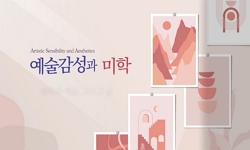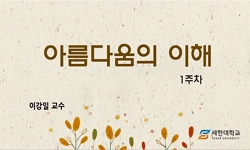This paper presents a reading of Jane Austen’s lesser-known early novella Lady Susan, examining the representation of widowhood as a critical foray into the modern discourse of female desire. Challenging the mainstream scholarship which emphasizes t...
http://chineseinput.net/에서 pinyin(병음)방식으로 중국어를 변환할 수 있습니다.
변환된 중국어를 복사하여 사용하시면 됩니다.
- 中文 을 입력하시려면 zhongwen을 입력하시고 space를누르시면됩니다.
- 北京 을 입력하시려면 beijing을 입력하시고 space를 누르시면 됩니다.

Widowhood, Coquetry, and Desire in Jane Austen`s Lady Susan = Widowhood, Coquetry, and Desire in Jane Austen`s Lady Susan
한글로보기https://www.riss.kr/link?id=A101572968
- 저자
- 발행기관
- 학술지명
- 권호사항
-
발행연도
2015
-
작성언어
Korean
- 주제어
-
등재정보
KCI등재
-
자료형태
학술저널
-
수록면
133-165(33쪽)
- 제공처
- 소장기관
-
0
상세조회 -
0
다운로드
부가정보
다국어 초록 (Multilingual Abstract)
This paper presents a reading of Jane Austen’s lesser-known early novella Lady Susan, examining the representation of widowhood as a critical foray into the modern discourse of female desire. Challenging the mainstream scholarship which emphasizes the authorial verdict on the amorous escapade of the eponymous heroine in one way or another, I demonstrate that the novel creates a less judgmental, less moralizing and more tolerant, more exploratory space for signifying capacious female desire. My first argument is that Austen, by taking a defamilarizing look at the discourses of motherhood and sensibility, the two powerful cultural scripts for constructing the ideal of domestic femininity, illuminates the performative nature of both and the possibility of critique as well. Next, I interpret coquetry as a transgressive strategy of deferral of marriage, whereby the patriarchal gender relation in the regime of heteronormativity is called into question. The heroine’s conclusive marriage, I contend, is not a submissive sign but another performativity that enacts the potential female agency. Lastly, I revisit the implications of the narrative shift in the conclusion chapter of the novel. I argue that the appearance of omniscient narration does not intend to nullify the heroine’s struggle but rather clarifies the conditions, meanings, and limitations of her desire. Elaborating these three related arguments, this paper aims at placing Lady Susan in a continuum of widow-coquette, the complex figure who interrogates the parameters of domestic femininity, and thereby placing Lady Susan as worthy of a significant precursor to Austen’s canon in its insight into the dynamic link between shaping of modern female sexuality and the narrative of marriage plot.
동일학술지(권/호) 다른 논문
-
- 한국18세기영문학회
- 김순원 ( Soon Won Kim )
- 2015
- KCI등재
-
- 한국18세기영문학회
- 민자영 ( Jayoung Min )
- 2015
- KCI등재
-
것을 얻는 남자: 아프라 벤의 「방랑자」에 형상화된 가부장 사회의 위력
- 한국18세기영문학회
- 전인한 ( In Han Jeon )
- 2015
- KCI등재
-
The Epistolary Form`s (In)effectiveness as a Moral Instrument in Richardson`s Pamela
- 한국18세기영문학회
- ( Ja Yun Choi )
- 2015
- KCI등재




 KISS
KISS




